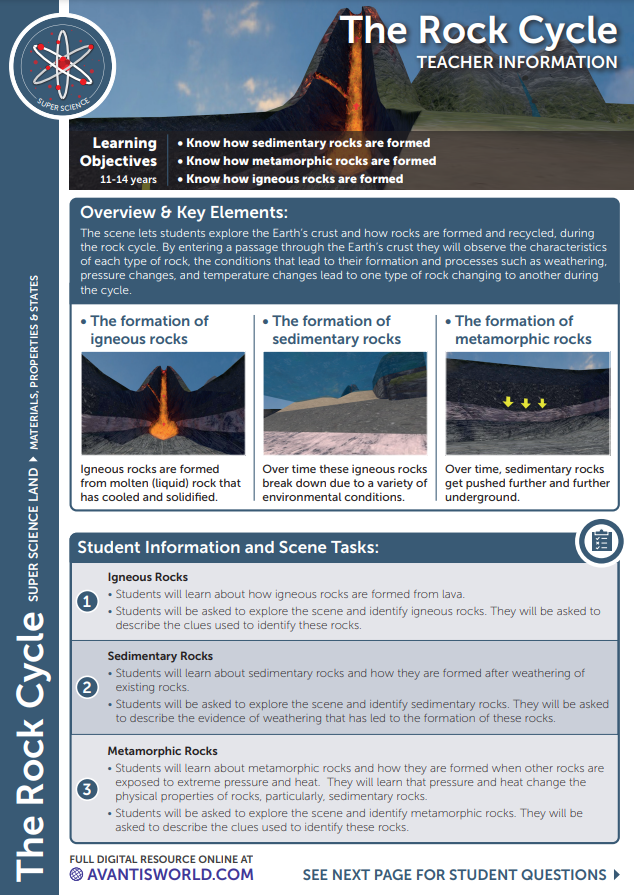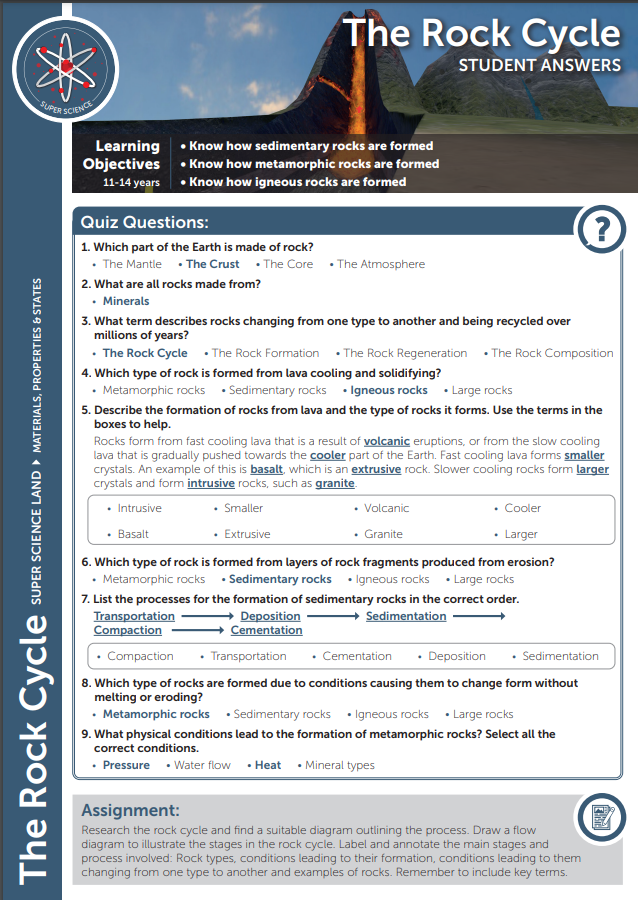 Loading...
Loading...
Initial language selection is based on your web browser preferences.
# Learning objectives 1: Know how Sedimentary Rocks are formed {.info} 2: Know how Metamorphic Rocks are formed {.info} 3: Know how Igneous Rocks are formed {.info} # Igneous Rocks {.objective .objective1} Students will learn about how igneous rocks are formed from lava. They will learn that molten rock magma cools at different rates leading to the formation of either intrusive or extrusive igneous rocks. Students will associate these rocks to the sizes of the mineral crystals formed upon cooling. Students will be asked to explore the scene and identify igneous rocks. They will be asked to describe the clues used to identify these rocks. # Sedimentary Rocks {.objective .objective2} Students will learn about sedimentary rocks and how they are formed after weathering of existing rocks. They will learn that fragments of rocks are transported, deposited, compacted, and cemented in the formation of sedimentary rocks. They will learn that the type of sedimentary rocks formed depend on the size of the fragments that are cemented together. Students will be asked to explore the scene and identify sedimentary rocks. They will be asked to describe the evidence of weathering that has led to the formation of these rocks. # Metamorphic Rocks {.objective .objective3} Students will learn about metamorphic rocks and how they are formed when other rocks are exposed to extreme pressure and heat. They will learn that pressure and heat change the physical properties of rocks, particularly, sedimentary rocks. Students will be asked to explore the scene and identify metamorphic rocks. They will be asked to describe the clues used to identify these rocks. # Teacher Resources ### Download Teacher Notes [](https://data.avncloud.com/activities/794445/files/The%20Rock+Cycle+Teacher+Notes+1.pdf?date=1677687806&size=1038107&md5=60ea76fc20a3f4427bd563b51e80f567) ### Student Quiz Answers Document [](https://data.avncloud.com/activities/794448/files/The%20Rock+Cycle+Teacher+Notes+2.pdf?date=1677751059&size=555844&md5=8152399fdc0fa82e4fa5333a0cb4ed09) ### Download Student Quiz Document [](https://data.avncloud.com/activities/794516/files/The%20Rock+Cycle+Teacher+Notes+3.pdf?date=1677746452&size=95347&md5=bf9927609de0364423493ec40acf63a6)